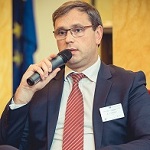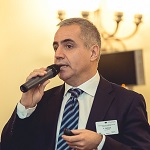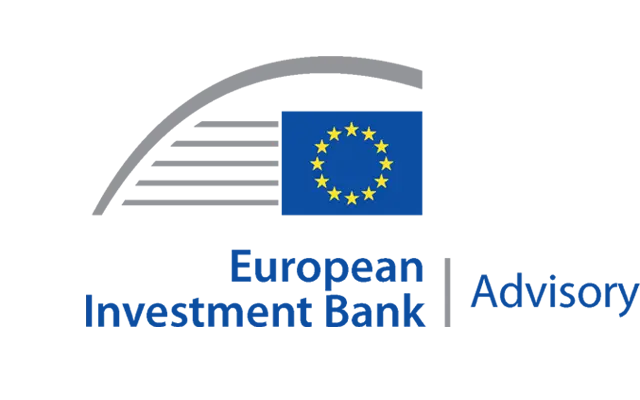Financial Instruments for delivery of the ESF
Overview

Picture: Audrius Zabotka, INVEGA, Lithuania
On 21 October 2015, financial instruments delivering the ESF were discussed at a seminar in Rome. This seminar was part of a series of seminars conducted in Paris, Rome and Warsaw.
Around 80 participants attended the seminar in Rome. This shows high interest in financial instruments under the ESF. Following the opening and welcome speeches by Leonardo Colucci, European Commission and Pieter Coppens, European Investment Bank practical experiences on the use of financial instruments under the ESF were presented. This included three examples from Italy and one example from Lithuania.

Picture: Event participants
The Enterprise promotion fund in Lithuania is a good example of promoting business start-ups, entrepreneurship and job creation with the help of microloans and training for final recipients. The JEREMIE initiative in Lombardy was a pioneering exercise. A lesson learned was the process of selecting the financial intermediary. The Marche region in Italy showed the use of microcredit to promote entrepreneurship, offering jobless individuals the resources and training needed to set up a business. Finally, the JEREMIE experience in Sicily has been presented.
The presentations of practical examples was followed by a presentation on ESF programmes and the potential use of financial instruments, a presentation on the fi-compass support to ESF programmes and a presentation in financial instruments to support employment and social innovation under the EU programme for Employment and Social Innovation, going more in-depth on the potentials for microcredits.

Picture: Paolo Zaggia, Finlombarda, Italy
The seminar concluded with training on the ex-ante assessment, a pivotal element in the design and set-up phases of the financial instrument. Participants were invited to discuss the basic steps of an ex-ante assessment. The groups were split by the most common thematic objectives in ESF programmes, TO8, TO9 and TO10. Lively table discussions lead to the conclusion that the ex-ante assessment as a central element for financial instruments, which can determine the success of the instrument.
| Title | Speakers | ||
|---|---|---|---|
| |
Introduction – key features of Financial Instruments |
Alessandro Valenza, fi-compass expert |
|
| |
State of play of Financial Instruments in the ESF 2014-2020 programmes |
Audrius Zabotka, INVEGA, Lithuania |
|
| |
State of play of Financial Instruments in the ESF 2014-2020 programmes |
Paolo Zaggia, Finlombarda, Italy |
|
| |
State of play of Financial Instruments in the ESF 2014-2020 programmes |
Mauro Terzoni, Marche region, Italy |
|
| |
State of play of Financial Instruments in the ESF 2014-2020 programmes |
Gianluca Palermo, European Investment Fund, Sicily JEREMIE ESF |
|
| |
The ESF programmes and the potential use of Financial Instruments |
Andrea Da Pozzo, European Commission |
|
| |
The fi-compass support to ESF programmes |
Bruno Robino, European Investment Bank |
|
| |
Financial instruments to support employment and social innovation: EU Programme for Employment and Social Innovation (EaSI) |
Riccardo Aguglia, European Investment Fund |
|
| |
Financial instruments to support employment and social innovation: EU Programme for Employment and Social Innovation (EaSI) |
Christos Pouris, European Investment Bank |
|
| |
Training session on design of Financial Instruments under ESF |
Alessandro Valenza, fi-compass experts Giovanni Familiari, fi-compass experts Michele Alessandrini, fi-compass experts |

